
“In a lot of ways, it’s just a normal NOLS course. But there’s also an aspect of recognition that the outdoor world is still predominantly male, and it’s cool and empowering to be out here with a bunch of women who historically haven’t always been accepted in this realm of work and play.” —Katie Oram, NOLS Instructor
It’s late February 2019, and Katie is leading NOLS’ first all-female backcountry ski touring expedition. Like any NOLS course, it’s an opportunity for a group of strangers to come together to build leadership and outdoor skills in a beautiful wilderness setting. But, as Katie noticed, there’s something intangible, yet very present, that’s different.
All-women’s expeditions are built on the same core principles as all NOLS courses: leadership and risk management in the wilderness, environmental stewardship, and expedition behavior—supporting your team and putting the group first. But these courses are also something special: a unique opportunity to dive into the NOLS curriculum with a with a small community of peers who share a common identity.
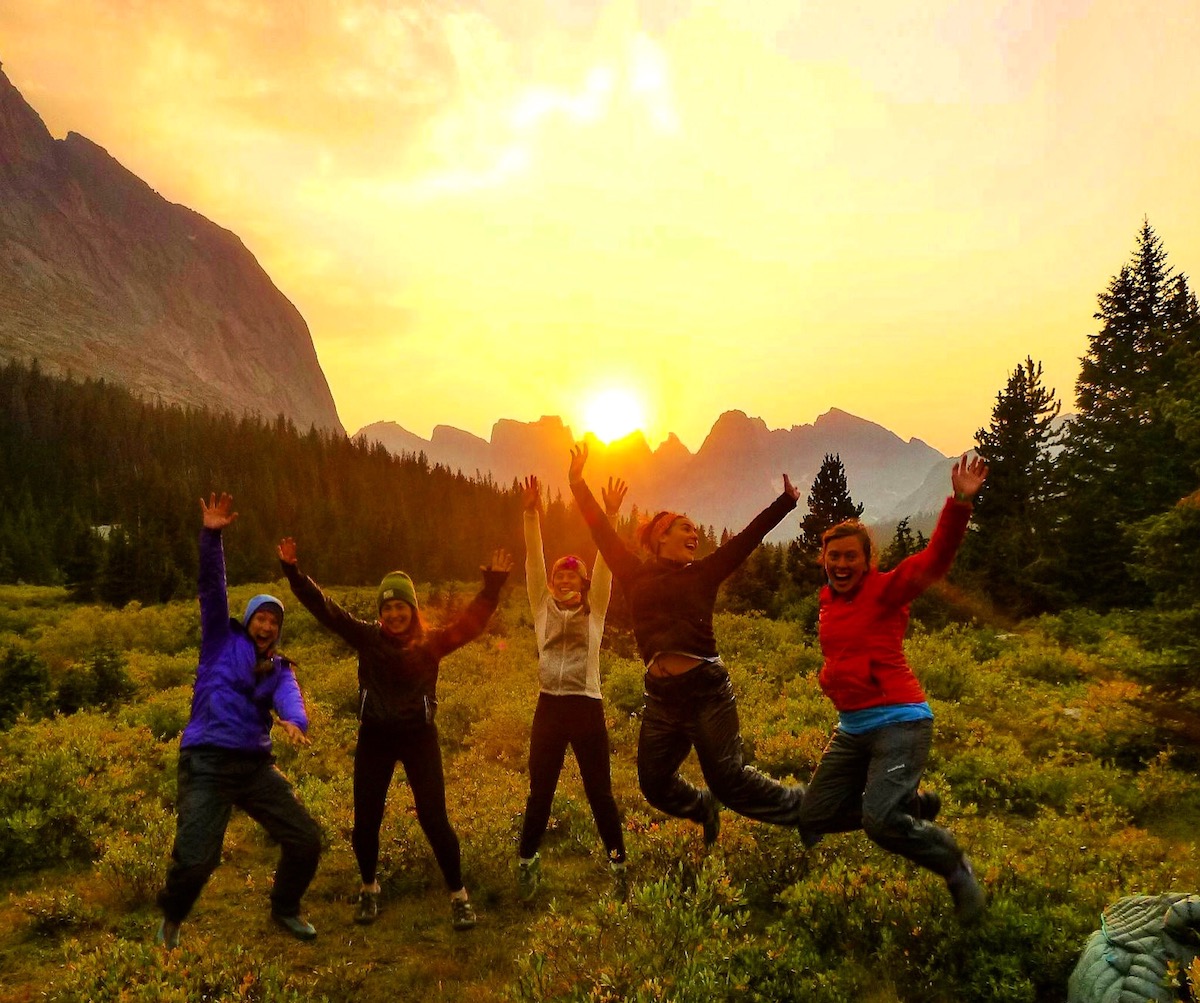
It’s no secret that there’s a gender gap in the outdoor industry. And while women have claimed plenty of significant firsts in the outdoors—Lynn Hill’s free ascent of The Nose on El Capitan, Kit DesLauriers skiing the Seven Summits, the list goes on—that doesn’t translate to inclusivity across the industry.
In a 2017 survey, Outside Magazine found that 69 percent of 2,100 female respondents had been “condescended to as an athlete” and 53 percent reported they’d been harassed while recreating outdoors. Even at NOLS, where nearly 50% of all expedition instructors identify as female, only 37% of our course leaders—the lead instructor on a team—are women.
One response to the so-called gender gap is the growing array of outdoor opportunities for all-female groups. While there’s some debate about whether this trend offers a satisfactory solution, anecdotal evidence suggests there’s value to this model.
Following the first American Mountain Guide Association’s all-women’s Single Pitch Instructor course, Shelma Jun, founder of the women’s climbing organization Flash Foxy, wrote that “There is so much power in women teaching women. It helps to reinforce the idea that we, as women, can be the experts, the decision makers and the teachers in the outdoors.”
NOLS students and instructors also report there are benefits to joining a women’s-only expedition. Here are some of the reasons they value all-female spaces in the outdoors.
There’s a unique and supportive course culture
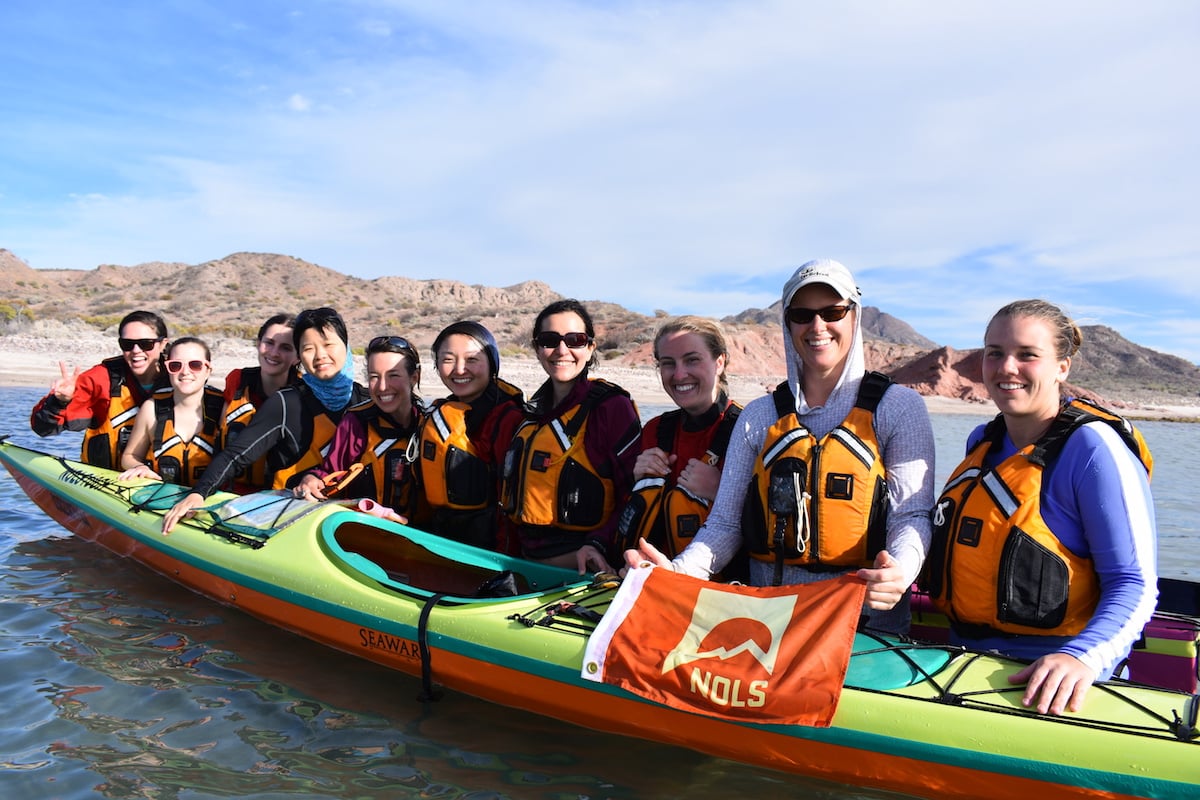
On every NOLS expedition, it’s up to everyone on the course, both instructors and students, to create what we call a positive learning environment: a space where everyone feels supported and respected so they can concentrate on participating fully in the expedition.
On the women’s backcountry touring expedition she co-led with another female instructor, Katie noticed a “culture of support and inspiration versus competition,” a space where students and instructors shared the experience of being female in a traditionally male-dominated realm. That environment “took away the sense that I have to prove myself even though we have the same training and can perform at the same level.”
Longtime sea kayaking instructor and NOLS Custom Education senior account manager Lynn Petzold says that one of the highlights of teaching all-women’s courses is “seeing women pause in their lives and take a break from other responsibilities they have for others. There is a real joy in rediscovering who they are and what dreams they still want to manifest.”
She explains that, “There is confidence that comes from not just taking on leadership roles, but having successes that are honored and appreciated. A place where women feel less judged and more supported.”
Learning from Female Mentors is Inspiring
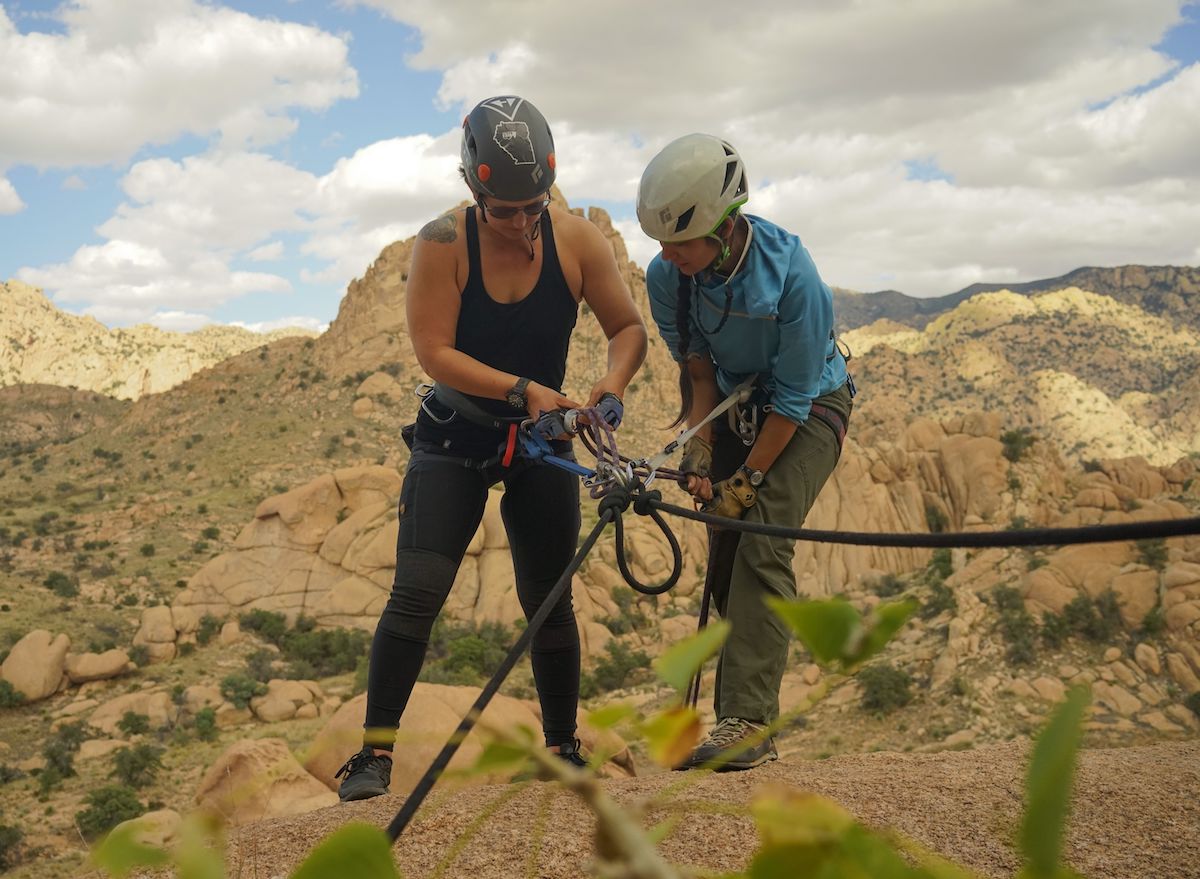
Seeing female instructors and students crush it in the backcountry sends a clear message: women belong here—in leadership roles.
Katie says that, “One of the things that’s really powerful about women’s courses is that there’s someone who looks like you doing this thing you want to do. So you feel like, ‘Oh, I can do that.' Students felt that with me and my co-instructor, but also with each other.”
For example, while watching a coursemate split wood, one student declared it was something she’d always wanted to learn how to do—and she knew her coursemate could teach her. That’s exactly what they did, one woman teaching another.
“In many other settings,” Katie observes, “it would’ve been a man splitting wood.” She also saw students taking note of each other’s skiing expertise, looking for tips and examples from one another rather than getting sucked into an atmosphere of “silent competition.”
Building Technical Knowledge and Confidence Go Hand-in-Hand
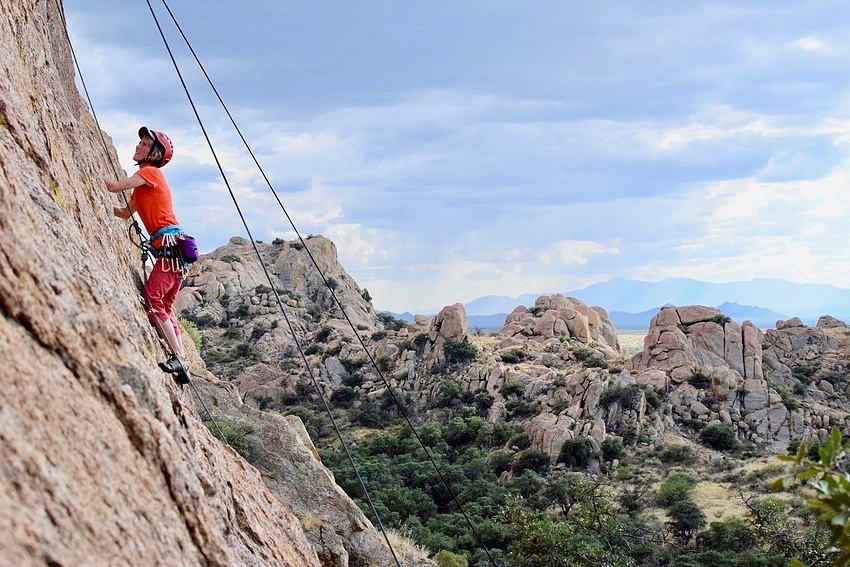
Katie sees the purpose of all-women’s courses as “helping more women become competent in outdoor skills so they can go out into the industry and be confident.” But it’s also about building the confidence to lead a team—in any setting.
NOLS grad Liz Johnson says that on her Women’s Southwest Rock Climbing course, “We spent our days climbing, gaining strength and prowess on the rock. In turn, our confidence and sense of empowerment grew.”
Katie also sees a connection between women gaining confidence in their outdoor skills and their ability to lead. Throughout the course, Katie’s ski touring students worked to build the knowledge and experience they needed to assess avalanche hazards and navigate more challenging backcountry slopes. She noticed her students saying things like, “I believe in myself. I have the knowledge to go do this now.’”
At the beginning of the expedition, many of these students identified “gaining confidence to speak up in a group” as one of their primary goals in taking the course. At the same time, they sought to “gain competence in backcountry skiing and recognizing avalanche terrain so they could feel comfortable leading their friends.”
This confidence is directly transferable back to life in the frontcountry. Sea kayaking instructor and NOLS intranet manager Alison Hudson notes that “having the space to be in charge and make the decisions shows women that they can do this outside of a course just as easily and that they have a place in the outdoor industry.”
There’s Space to Try out Different Leadership Roles
The NOLS curriculum breaks leadership down into four key roles: designated leader, active follower, peer leader, and self leader. Depending on their leadership style, different people find different roles more comfortable, but it’s important to be able to take on any role when the situation calls for it.
In all-women’s groups, instructors and students observed that their peers seemed more willing to take on leadership roles they were less comfortable with. For some, this meant building the confidence to step into the designated leader position, taking responsibility for guiding the group. For others, this meant stepping back and supporting the team as an active follower rather than driving the decision-making process.
Alison shares that she “really enjoys watching female students step into the designated leader role and figure out their voice. Often this involves a conversation around how they think they should be showing up and how they want to show up, which are often at odds with one another and are influenced by social narratives around what it means to be a woman leader.”
On the flip side, an all-women’s course can also give students the space to not feel pressured to constantly take charge. Instructor Lynn Petzold believes that “there is confidence gained from being in leadership roles. I also think there’s a benefit to women choosing not to take on designated leadership roles. It’s important for women to learn they don’t have to fill a gap or void.”
NOLS backpacking graduate and Development Communications Coordinator Anne McGowan agrees. Over time, she’s come to recognize that “there’s a real place for active followership. I still have ambition and seek new challenges, but sometimes the active followership role is overlooked and not given the same kind of respect. There’s an expectation of always wanting to step into that designated leader role. I’ve learned that isn’t always right for me.”
Discussions About Diversity, Equity, and Inclusion Go Beyond Gender
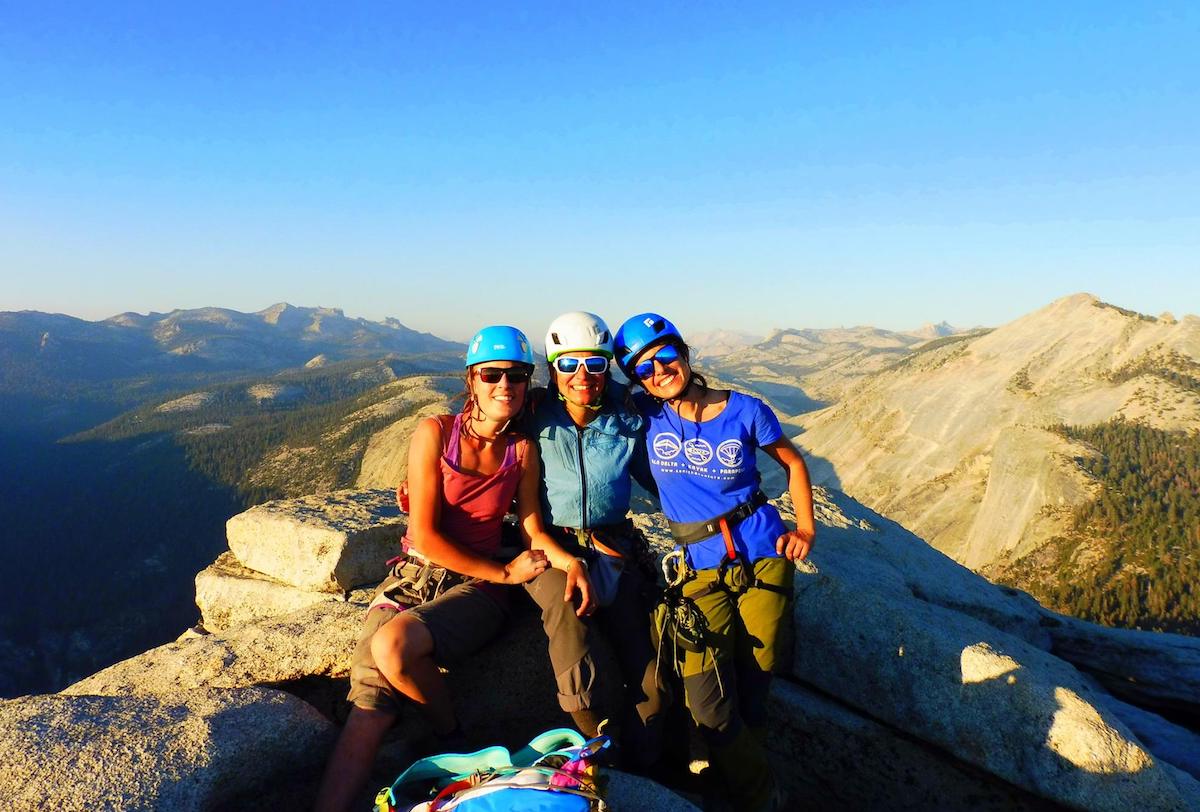
An all-women’s expedition is an opportunity for students and instructors to challenge and expand their thinking. It's an opportunity to engage in meaningful discussions about equity, inclusion, and systems of oppression—without necessarily focusing the conversation around sexism and gender stereotypes, as often happens in mixed gender groups.
For instructor Elena Chin, one of the most powerful aspects of a women’s rock climbing course she taught was that “conversations about gender were optional. We did not have to sit down and manage negative gender stereotypes. If we talked about gender, it was because we wanted to.”
A woman of color, Elena took the lead on urging the group to reflect on deeper questions, like whether the expedition was primarily a “women’s initiative or white women’s initiative.” The all-female environment made it possible to move beyond conversations about sexism and grapple with how other systems of oppression show up in the outdoors.
One thing that stood out, Elena recalls, is that “We talked a lot about race and being on Native land—I never had been on a course where we were so engaged with that.”
It’s a step toward changing the face of outdoor leadership
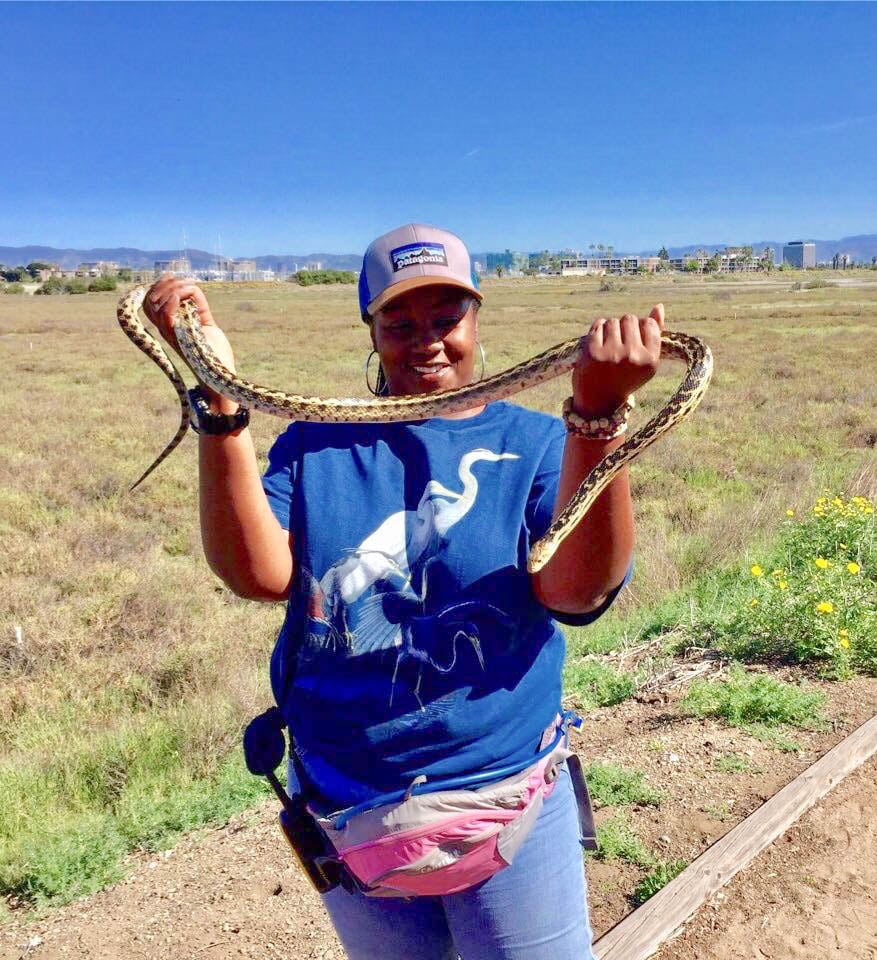
Outdoor educator, Wilderness Medicine graduate, and NOLS Marketing Representative Day Scott recalls that, “When I first got into outdoor education, it was male-dominated, and still is.”
When Day started leading interpretive nature walks in the wetlands of southern California, she noticed that “kids and adults were often intrigued, not only about the information I was communicating but the way I presented it. I think because I was a black woman, people were wondering, ‘Wow, how does she know that stuff and where did she come from?’”
By showing up in a leadership role, Day challenged her students’ assumptions about who is a leader in the outdoors. She “got used to standing out.” But it wasn’t just Day’s race and gender that stood out to her students: it was also her passion for teaching, for sharing knowledge and laughter in the outdoors.
She “continuously received written thank-you letters from students and teachers after our time together on the wetland.” In the pictures her younger students drew, Day was “surrounded by flora and fauna. This was especially warming because they used the brown crayon to depict my skin tone, they even illustrated my braids and big smile!”
Ultimately, Day has found that that “adventuring in nature has the ability to open our hearts and interpretive learning opens our minds. As an environmental leader, I take pride in being a role model for youth and adults.”
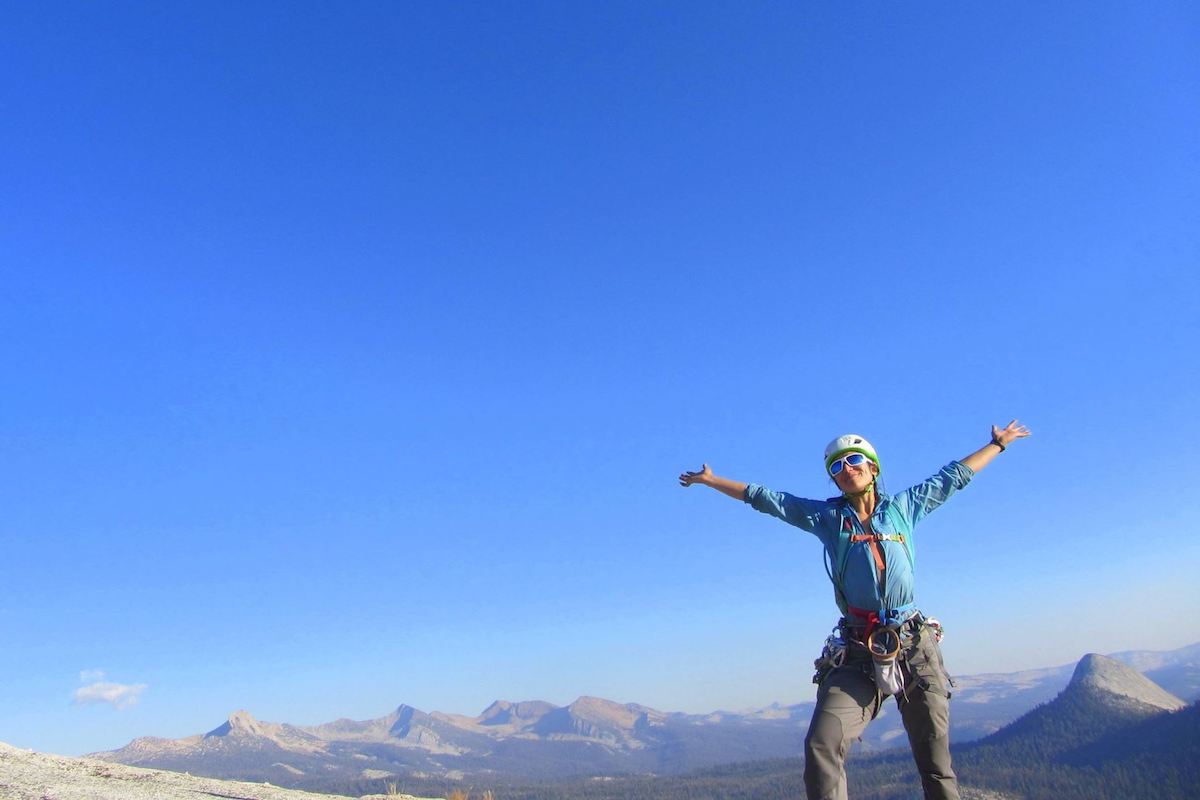
All-women’s expeditions aren’t a panacea for the inequities that persist in the outdoor industry. But they are an opportunity for women to learn together in the outdoors, build community, and inspire one another.
- Leadership Skills
- Research
- All Women
- Female Leaders
- Inspiring Women
- Nols Expeditions
- Affinity
- Stories
- Affinity Stories
- Leadership
Written By
Brooke Ortel
Brooke is a runner and writer who enjoys finding adventure in the everyday. True to her island roots, she loves sunshine, that salty ocean smell, and the sound of waves against the shore.



